 |
 |
 |
| |
Characterizing the Levels of Knowledge, Attitudes, and Behaviors Regarding the Use and Risks Associated with Oral HIV-1 Pre-Exposure Prophylaxis (PrEP) Among People Prescribed PrEP in Canada
|
| |
| |
5th HIV Research for Prevention Conference (HIVR4P 2024); October 06-10, 2024; Lima, Peru
Soodi Navadeh1, Jesse Najarro Cermeño2, Taban Saifi3, Carla Che3, Amy Liang3, and Dylana Mumm3
1Gilead Sciences, Inc., Foster City, CA, USA; 2Gilead Sciences, Inc., Parsippany, NJ, USA; 3Gilead Sciences Canada
Abstract
BACKGROUND: People prescribed oral HIV-1 pre-exposure prophylaxis (PrEP) have access to educational materials and information on the safety and efficacy of PrEP. We assessed their knowledge, attitudes, and behaviors using a pre-tested self-reported survey in two waves in Canada; here, we report the results from Wave 1.
METHODS: Wave 1 (November 2023-February 2024) surveyed people aged =18 years who were currently taking or had previously taken (within =30 days) oral PrEP and who agreed to participate. Primary endpoint was adequate oral PrEP knowledge, defined as 75% correct responses regarding oral PrEP information use and risks. Secondary endpoints included attitudes and behaviors toward oral PrEP.
RESULTS: Among 152 people invited, 69 completed the survey. Most respondents identified as male (87%). The majority (97%) had high school diploma or higher education; 57% were employed full-time. On average, respondents answered 77.7% of questions correctly; 4.4% scored <50% (Table). Adequate knowledge was demonstrated by 75.4%. Regarding behaviors, most respondents (65%) initiated oral PrEP >1 year ago; 97% were prescribed daily oral PrEP and of these, 61% reported not missing any doses within =30 days. Most reported being tested for HIV-1 =3 times per year (81%) and were aware that oral PrEP initiation required a negative test (91%). Current partners' HIV-1 status was known by 49%. Condoms were used sometimes (52%), most of the time (20%), or always (10%); 70% did not use condoms during their last sex encounter. Respondents somewhat agreed or agreed (67%) with attitudes including being more likely to consider condomless sex while being on oral PrEP. They also viewed oral PrEP as equally important (42%) or the most important (52%) risk-reduction behavior.
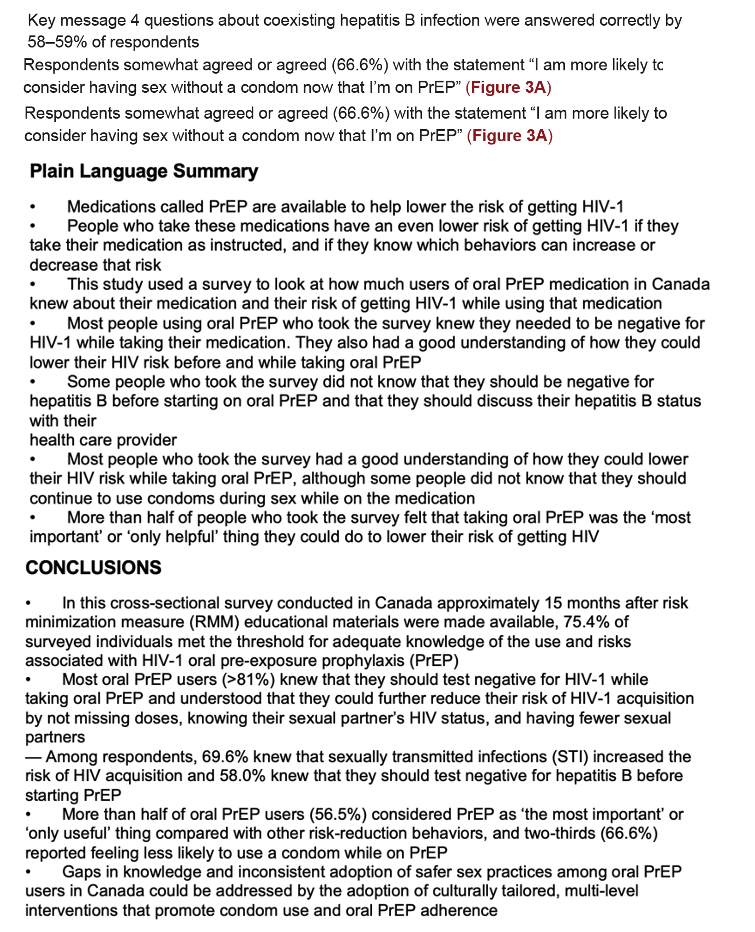
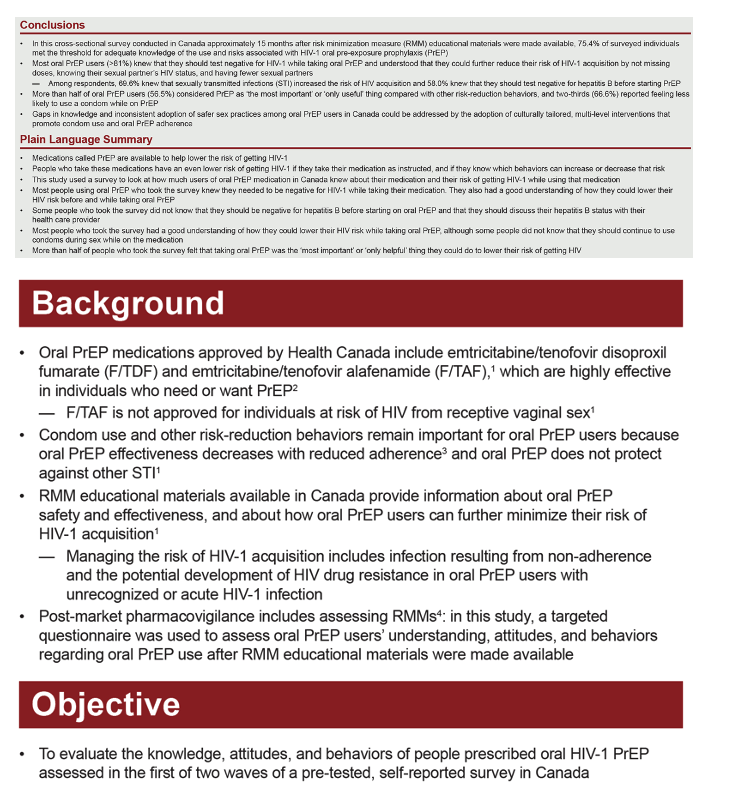
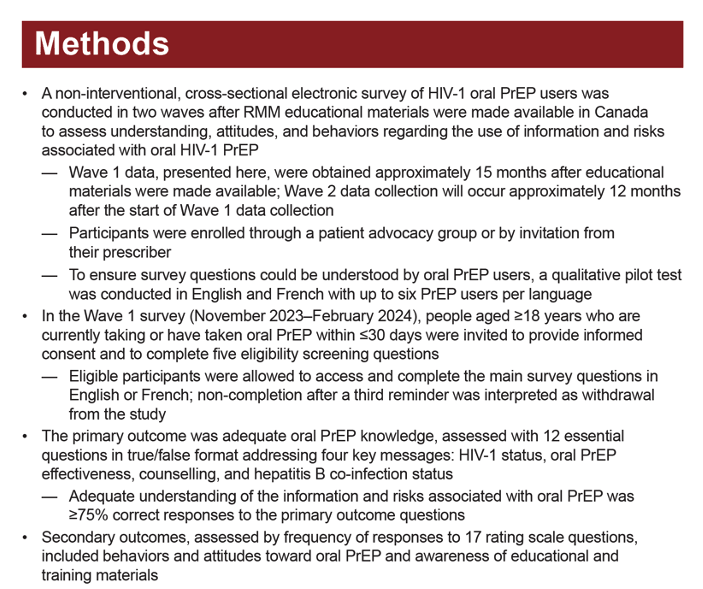
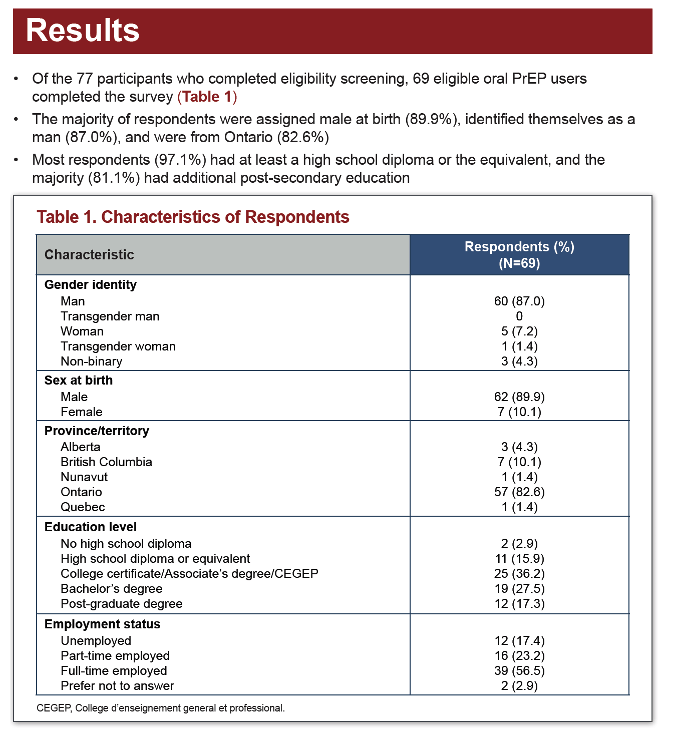
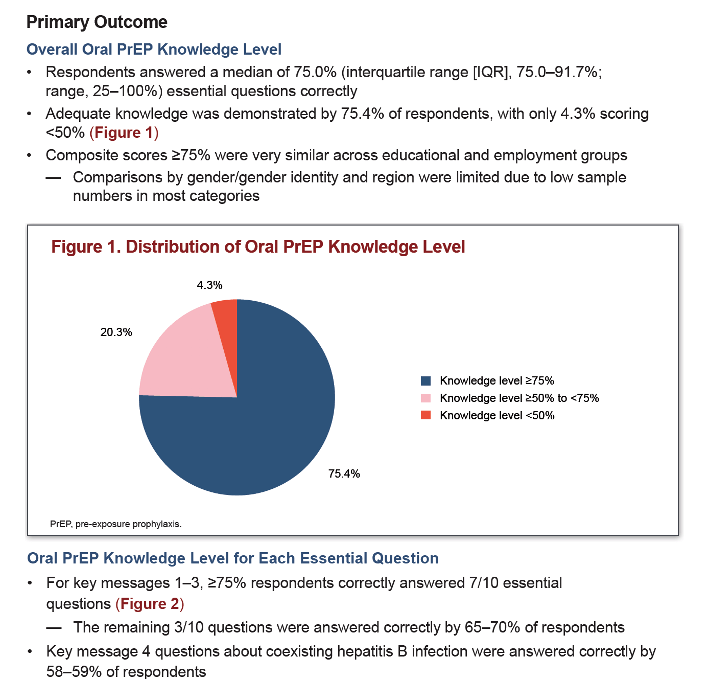
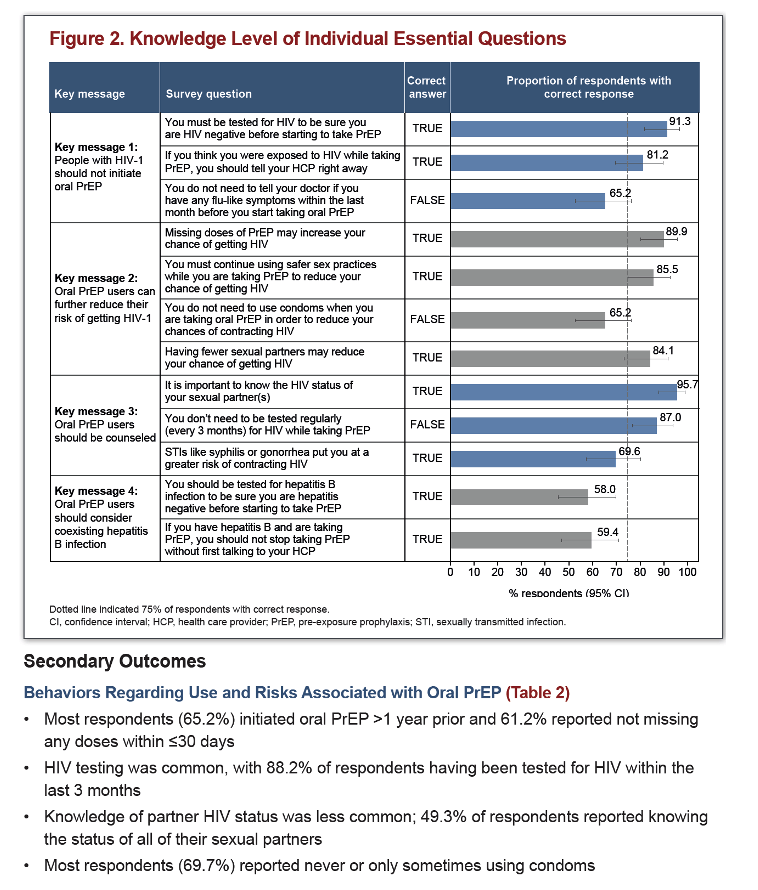
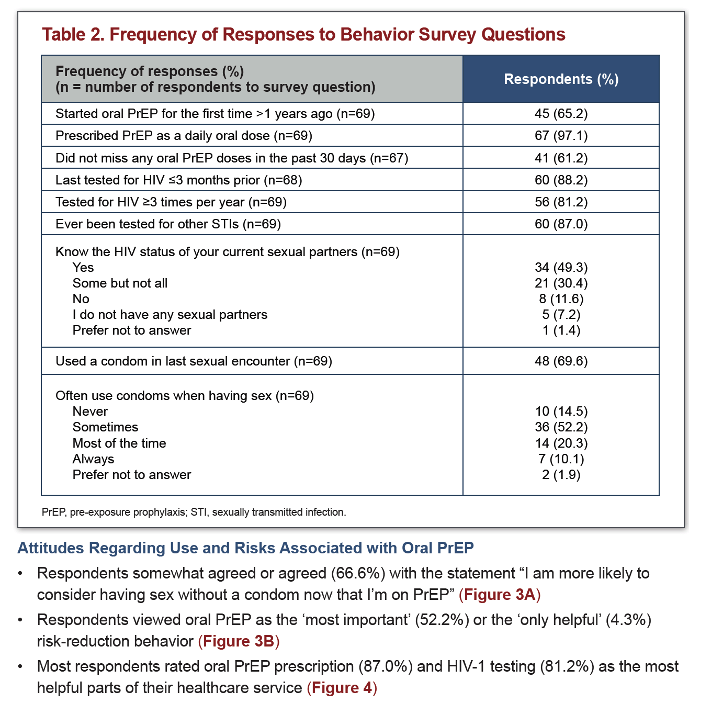
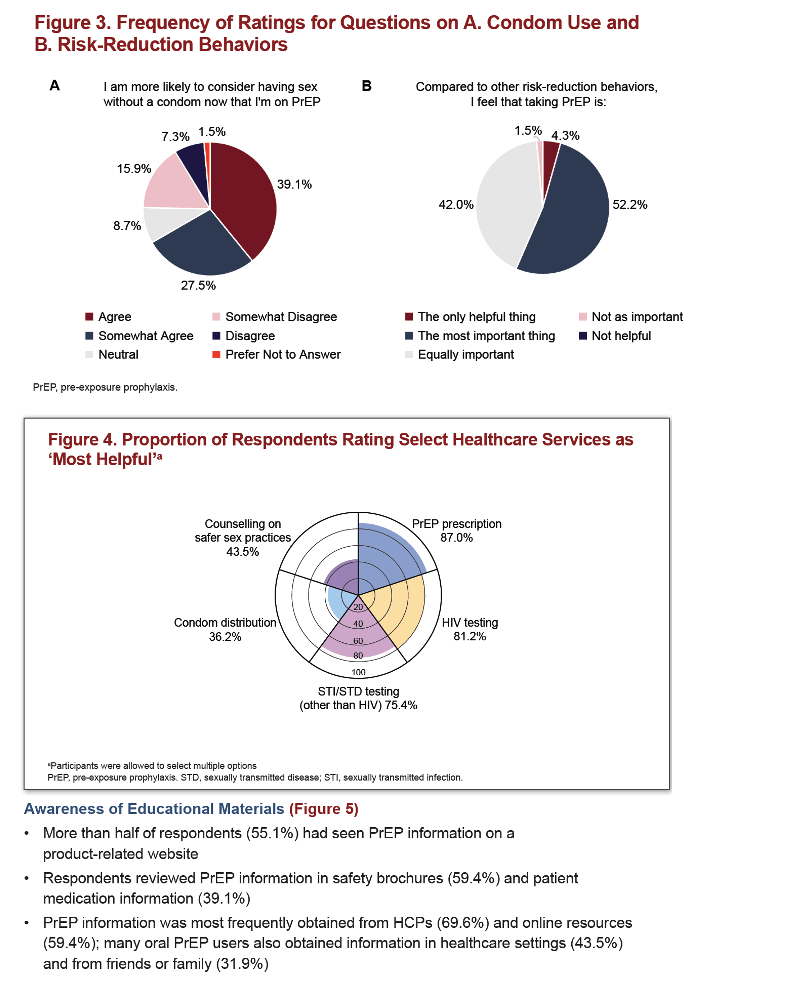
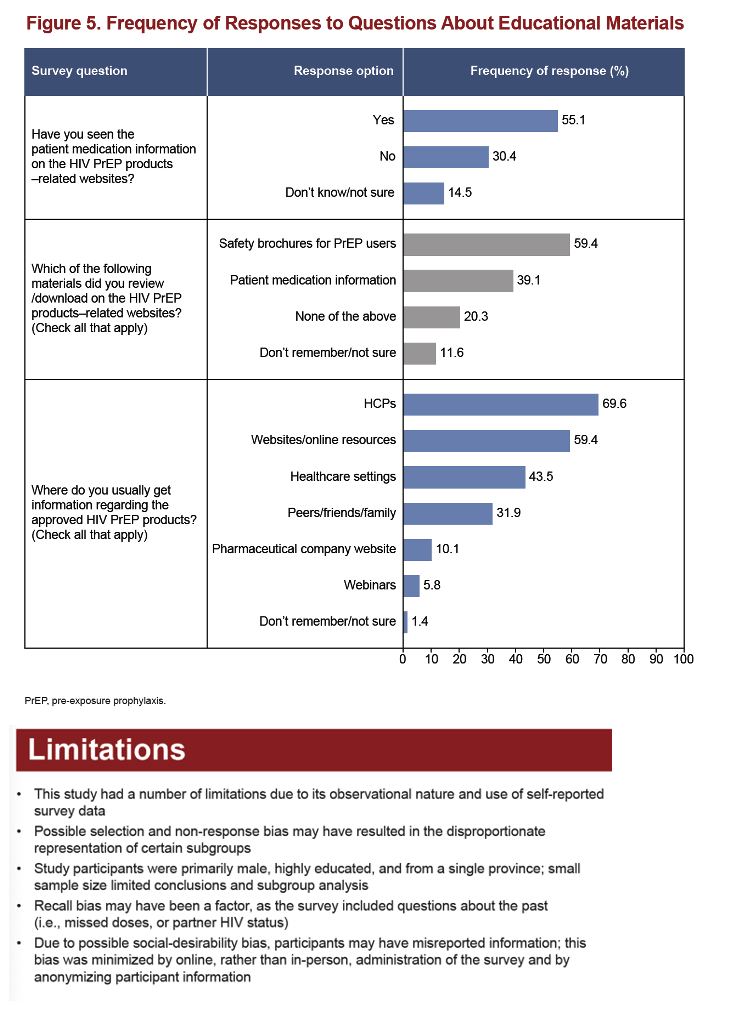

|
| |
|
 |
 |
|
|